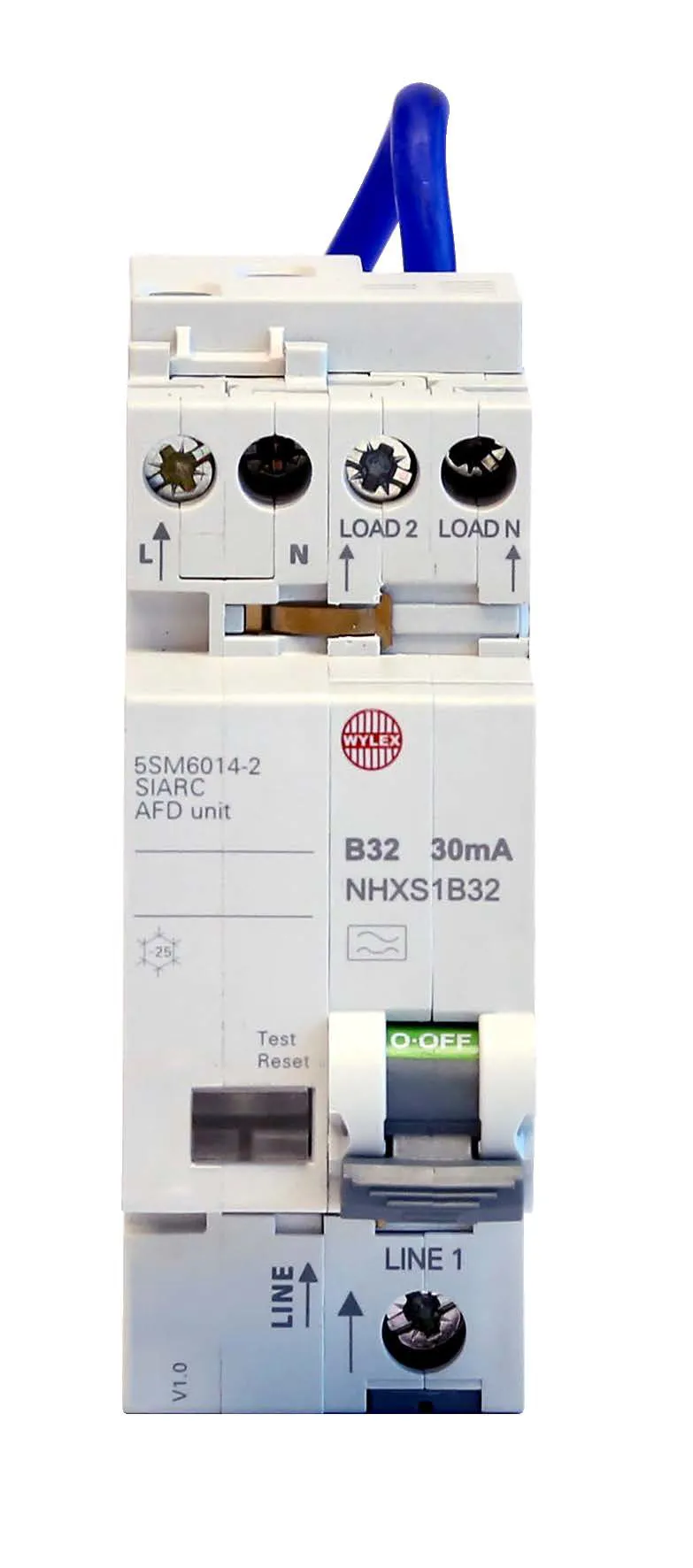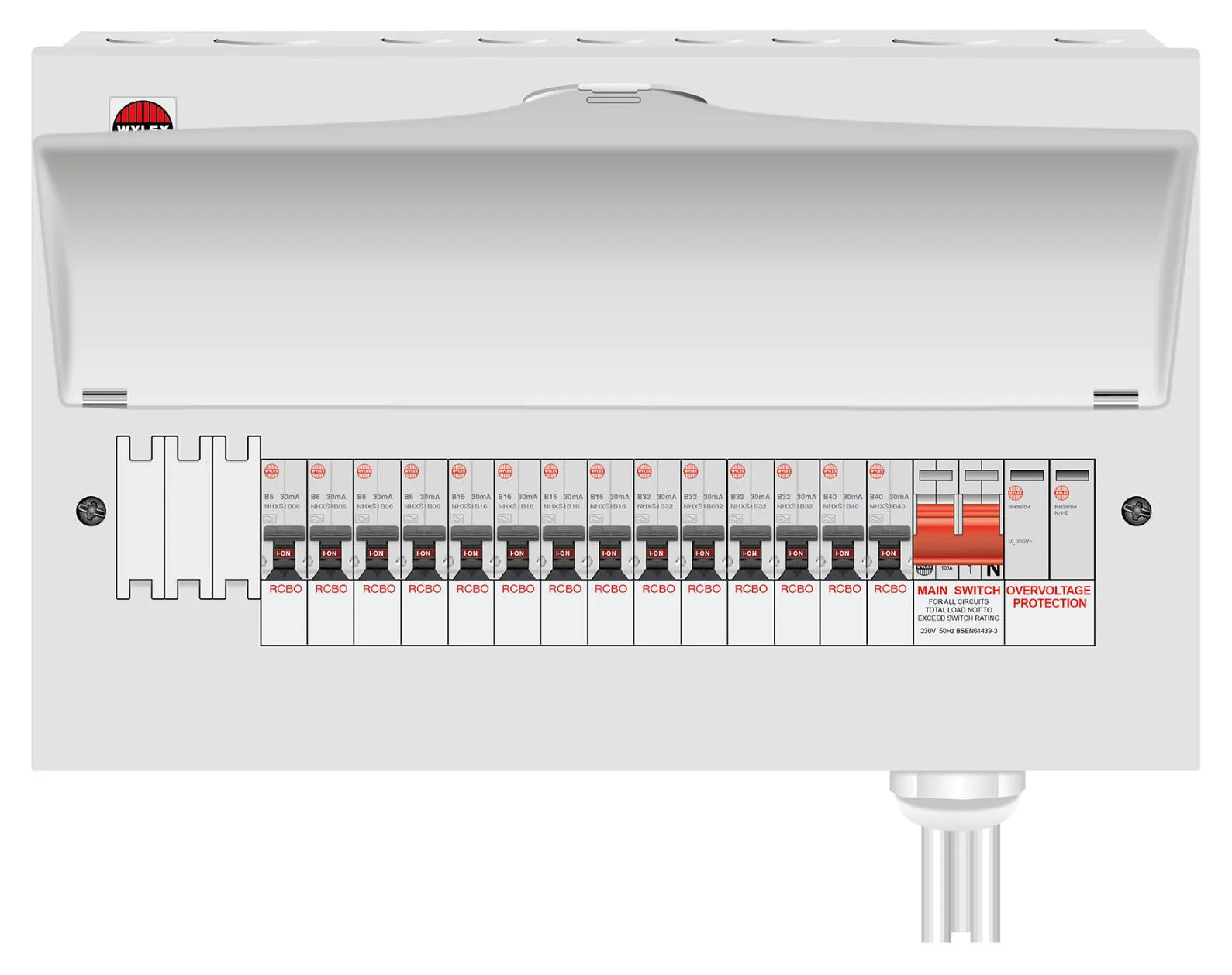What causes arcs?
An arc is created when the electrical current jumps the gap between two conductive materials. The most common causes of arcs include worn contacts in electrical equipment, damage to insulation, break in a cable and loose connections, to mention a few.
Fire statistics?
Whilst fires in dwellings have decreased significantly over the past ten years, there are still a considerable number of fires which are attributed to electrical faults. In 2017/18 there were 74,118 primary fires with 13,070 associated with electrical distribution or other electrical appliance faults, which is still a significant number. It is not to say that AFDDs would prevent all of these incidents, but it is likely that the number would be reduced.
What are Arc Fault Detection Devices?
AFDDs are protective devices installed in consumer units to provide protection from arc faults. They use microprocessor technology to analyse the waveform of the electricity being used to detect any unusual signatures which would signify an arc on the circuit. This will cut off power to the affected circuit and could prevent a fire. They are far more sensitive to arcs than conventional circuit protective devices.
Like a Residual Current Circuit Breaker (RCCB) or Residual Current Breaker with Overcurrent protection (RCBO), AFDDs usually incorporate a test button which can be operated by the end-user to prove the mechanical operation of the device.

Image credit: Electrium
In terms of physical size, at present AFDDs are typically twice the size of a circuit-breaker and will require a larger consumer unit to accommodate. It is unlikely that AFDDs can be installed in an existing consumer unit due to spare physical space and the existing busbar connection arrangement, AFDDs require a busbar with live and neutral connections.
Do I need to install Arc Fault Detection Devices?
The electrical designer/installer is best placed to offer advice on the installation of AFDDs.
In the current edition of the IET Wiring Regulations, BS 7671:2018, it is a recommendation to install AFDDs but the customer can choose to omit them. However, this decision should be based considering any relevant risk and safety factors against the cost of installation.
AFDDs are worth consideration if there is an increased risk of fire, such as:
- Premises with sleeping accommodation, for example, houses, hotels, and hostels.
- Locations with a risk of fire due to the nature of processed or stored materials, for example, stores of combustible materials.
- Locations with combustible constructional materials, for example, wooden buildings.
- Fire propagating structures, for example, thatched buildings and timber-framed buildings.
- Locations with endangering of irreplaceable goods, for example, museums, listed buildings and items with sentimental value.
It may also be worth speaking to your insurance company, to see if they would payout in the event of a fire if AFDDs were not installed as recommended in BS 7671:2018.
Do I need to install an AFDD on every circuit?
In some cases, it may be appropriate to protect particular final circuits and not others but if the risk is due to fire propagating structures, for example, a timber-framed building, the whole installation should be protected.
How much do Arc Fault Detection Devices cost?
Currently, the typical cost of an AFDD is in the region of £100 per device.
A complete consumer unit with RCBOs, circuit-breakers, surge and AFDD protection would be a significant investment, which seems quite a high cost on the face of it but when you consider the cost over its lifetime and the fact it could save a life, property or items with high sentimental value or which cannot be replaced, it makes it well worth consideration.

Image credit: Electrium
